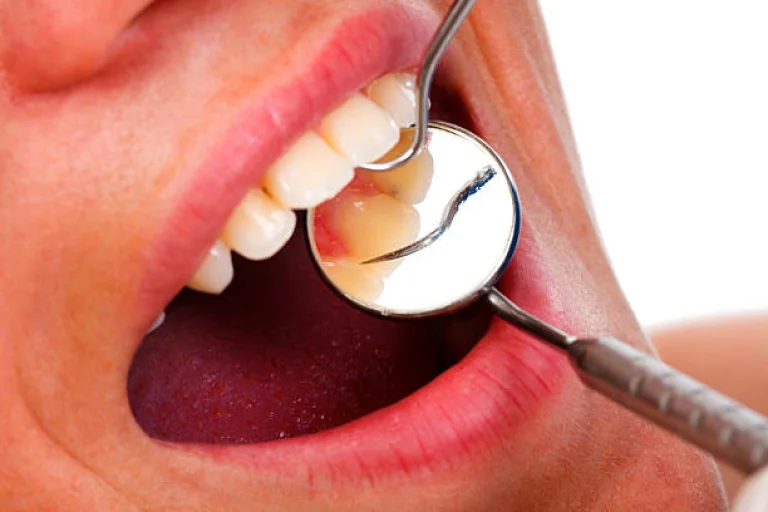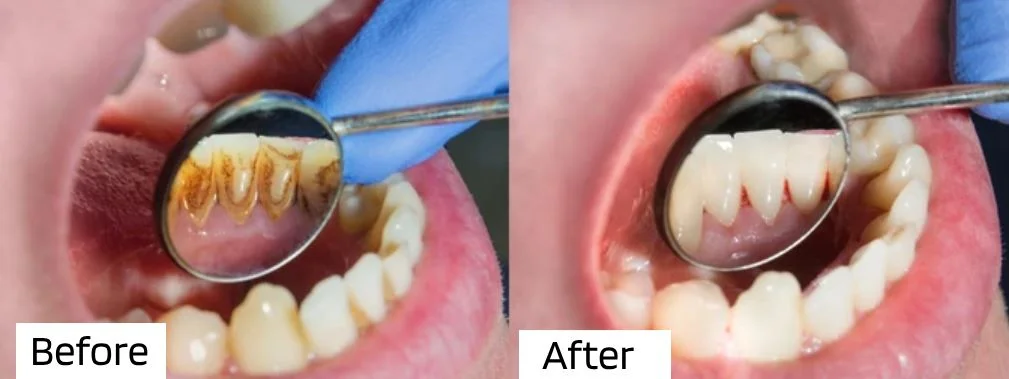
- Home
- About
- Our Team
- Services
- Postoperative Care
- Smile Gallery
- Medical Tourism
- Blog
- Offers
- Contact Us
- Home
- About
- Our Team
- Services
- Postoperative Care
- Smile Gallery
- Medical Tourism
- Blog
- Offers
- Contact Us

Calculus bridges in teeth are a common dental issue. Understanding what they are and how they affect dental health is crucial for maintaining a healthy smile.
Calculus bridge, also known as dental plaque, is a silent predator lurking in the shadows of our smiles, wreaking havoc on our oral health. This post will equip you with the knowledge to understand the calculus bridge, how it forms, and, most importantly, how to prevent and treat it effectively.
Calculus, commonly known as tartar, is a complex, mineralized deposit formed on teeth when plaque, a sticky bacterial film, mixes with minerals in saliva. It shows a yellowish or brownish accumulation on tooth surfaces, especially along the gumline. Calculus cannot be eliminated via regular brushing and flossing, so professional dental cleaning is required to prevent oral health issues, including gum disease and tooth decay.
Dental Calculus bridges are hardened plaque and tartar formations that connect two or more teeth. This buildup can arise due to poor oral hygiene and, if not addressed via regular dental treatment, potentially lead to oral health concerns such as gum disease and decay.
Plaque can form a calculus bridge by a process of mineralization and accumulation. Here is how it happens:
Plaque Formation: Plaque is a soft, sticky film formed on the teeth when bacteria interact with food particles and saliva. It sticks to dental surfaces, particularly the gum line and spaces between teeth.
Mineralization: Minerals from saliva, like calcium and phosphate, can accumulate on the plaque. Mineralization causes plaque to solidify and become calcified, resulting in dental calculus or tartar.
Accumulation: If plaque is not adequately eliminated by brushing and flossing, it will continue to collect on the teeth. As additional plaque develops and mineralizes, it can bridge between neighboring teeth or the edges of dental restorations such as bridges.
Bridge Formation: As plaque accumulates and mineralizes, it can create a hardened bridge-like structure that covers multiple teeth, known as a dental calculus bridge. This calculus bridge is securely attached to the tooth surfaces and can store germs, resulting in gum disease, tooth decay, and bad breath.
Proper oral hygiene routines, like brushing, flossing, and getting professional dental cleanings, are essential for preventing Dental calculus bridge development. These procedures help eliminate plaque before it hardens into calculus, lowering the risk of dental health problems.
The primary causes of calculus bridges are poor oral hygiene habits and conditions that encourage plaque development and mineralization. Here are the leading causes:
Poor Oral Hygiene: Improper brush and floss habits lead to plaque buildup on the teeth. If plaque is not removed, it will mineralize and harden into calculus, ultimately forming a bridge between teeth.
Irregular Dental Cleanings: Skipping regular dental check-ups and professional cleanings causes plaque and calculus to accumulate on the teeth. Professional cleanings are required to remove calculus deposits that cannot be eradicated by brushing and flossing alone.
Dietary Factors: A diet rich in sugary or starchy foods might enhance plaque development. Bacteria in the mouth consume these sugars and generate acids, leading to plaque accumulation and the development of calculus.
Smoking: Tobacco use can increase plaque collection and decrease saliva production, allowing calculus to develop on teeth.
Medications and health conditions: Some drugs and conditions can alter saliva production or composition, increasing the likelihood of plaque buildup and calculus development.
Anatomy, Tooth Alignment: Crowded or misaligned teeth might make cleaning more complex, increasing plaque accumulation and calculus.
Genetic Factors: Some people may be more prone to developing calculus because of genetic predispositions associated with saliva composition or tooth structure.
Dental Calculus bridge can cause several side effects and oral health issues:
Gum disease (periodontitis): Calculus bridges may irritate the gums and cause inflammation, resulting in gingivitis, which can progress to periodontitis if not corrected. Periodontitis is the breakdown of the teeth’s supporting components, including the gums and bone, which leads to tooth loss.
Tooth decay (caries): Calculus bridges can form spaces where bacteria flourish, increasing the risk of tooth decay. Acid-producing bacteria in plaque can erode tooth enamel, causing cavities.
Bad Breath (Halitosis): Calculus bridges can host bacteria that create foul-smelling chemicals contributing to chronic bad breath.
Gum Recession: Calculus bridges irritate the gums and contribute to gum disease, causing gum tissue to recede and expose the tooth roots, increasing sensitivity.
Cleaning Difficulty: Calculus bridges can make cleaning difficult between teeth and along the gum line, resulting in further plaque formation and increasing oral health difficulties.
Increased Risk of Oral Infections: Calculus bridges can harm oral health and increase the risk of oral infections, such as abscesses.
Bone Loss: Severe gum disease caused by calculus bridges can result in bone loss around the afflicted teeth, possibly jeopardizing their stability and prompting tooth extraction.
A calculus bridge requires good dental care to remove hardened plaque deposits and restore oral health. Here are the primary treatment approaches:
Deep cleaning, also known as scaling and root planing, is a typical method of treating dental calculus bridges and gum disease. Here’s how thorough cleaning works:
Scaling: Scaling is when a dentist or dental hygienist removes hardened calculus deposits from the tooth surfaces and below the gumline. This procedure involves scraping away the calculus, tartar, and plaque developed on the teeth.
Root Planing: Following scaling, root planing is used to polish the rough regions on the tooth roots. These rough surfaces can store germs, contributing to chronic gum inflammation and illness. Smoothing the roots promotes the reattachment of the gums to the teeth while also removing harmful bacteria.
Gum Healing: Deep cleaning improves gum healing by eliminating calculus deposits and polishing the tooth roots. It reduces inflammation, shrinks periodontal pockets, and promotes overall gum health.
After complete cleaning, it is critical to schedule regular dental care treatments. These consultations are usually held every three to four months to remove any leftover calculus deposits and assess gum health to avoid the return of gum disease.
Antibacterial Treatment: In rare cases, your dentist may recommend antimicrobial mouth rinses or antibiotics to help control germs and restore gum.
Home Care: Good dental hygiene at home is critical for reducing calculus bridge recurrence. It involves using fluoride toothpaste twice daily, flossing once daily, and cleaning between teeth and along the gumline using interdental brushes or water flossers.
Laser therapy: Laser-assisted periodontal treatment can help to eliminate calculus deposits and germs from deep periodontal pockets, encouraging gum healing and reducing inflammation.
Lifestyle Modifications: Quitting smoking and eating a balanced diet low in sweets and processed carbs can improve general dental health and lower the risk of calculus development.

To prevent dental calculus bridges involves.,
Good Oral Hygiene: Brush your teeth twice daily with fluoride toothpaste and floss daily to eliminate plaque and prevent it from mineralizing into calculus.
Regular Dental Visits: Schedule frequent dental check-ups and cleanings to eliminate calculus deposits and monitor oral health.
Healthy Diet: A healthy diet should include less sugary and starchy foods, which can lead to plaque development.
Smoking Cessation: Quit smoking, as tobacco usage can cause plaque development and calculus formation.
Proper Home Care: Clean between teeth and along the gumline using interdental brushes or water flossers, as your dentist advises.
Professional Advice: Seek expert advice for tailored prevention methods and treatment suggestions.
Removing a dental calculus bridge is necessary to improve oral health and significantly restore smiles. A calculus bridge is a potential danger to dental health. However, with the proper care and attention, it is manageable. Individuals may protect their dental health and avoid this development by practicing oral hygiene and obtaining professional advice. Remember, a preventive approach to dental care is essential for keeping your smile bright and healthy.